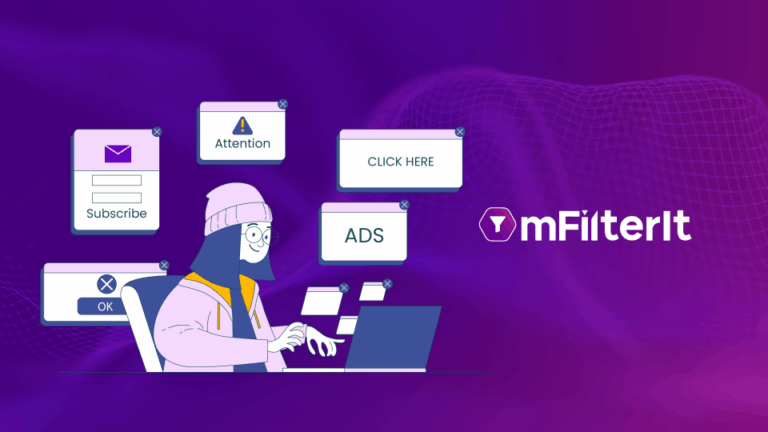Programmatic advertisements are goldmines for cybercriminal syndicates. Statista report estimated that programmatic ad spending would exceed $147 billion in 2020. It also stated that it accounted for 69.2% of the worldwide display ad spend in 2019. Moreover, the estimated cost per lead through programmatic display ads is nearly $40. Our research reveals that $1 out of $4 of advertising spends goes to fraudsters.
Cybercriminals create hoax websites, spoof domains, manipulate IPs & geolocations, etc., to obtain financial gain and drain advertising budgets. Such activities also hamper brand safety drastically. Programmatic ad frauds commonly occur through bot impressions, wherein fraudsters use bots, an invalid traffic source for displaying the desired results. Moreover, fraudulent clicks account for more than 60% of the installs and must be rejected. Instead, the ad network and advertisers account for it as postbacks.
Post-bid programmatic ad solutions work on detecting and eliminating bad bots and invalid traffic after receiving the first campaign results. Unfortunately, advertisers drain their advertising spending for their first campaign through this method. Moreover, new bots and IVTs may still hamper the upcoming campaigns. On the other hand, pre-bid programmatic ads require placing bids in 200 milliseconds, and the highest bid wins the placements. Studies suggest that bid requests can implode up to 200,000 per second.
You might engage in programmatic direct to receive the desired ad results and placements. However, publishers often charge higher than bid costs for ad placements because they provide premium traffic. So, it depletes the programmatic ad budget faster than expected and may not always prove as a useful solution. Ad fraud in programmatic ad leads to grave implications while advertisers are busy buying or bidding on ad placements.
Programmatic Ad Frauds: Grave Implications
● Screws Analytics and Ad Spends
Cybercriminals use malware, bots, and other methods to mimic the behavior of humans on ads. The two most common techniques used by them are CPM and CPC frauds. CPM fraud involves boosting false impressions for enhancing advertisement costs. Fraudsters use bots to implode impressions (that lie top of the funnel). Ad slots refresh with recurring webpage reloads.
Alternatively, they use data centers for targeting unseen iframes with stuffed ads. Cybercriminals even conduct geolocation scams by disguising data center traffic using residential proxies. Another common practice by fraudsters is device fraud.
They impersonate iOS devices for showcasing premium lead inventory to advertisers. On the other hand, CPC fraud involves delivering false clicks on click-based ads. Click spamming and click injection are the common methods fraudsters use for CPC campaigns.
The high-performance CTR is a result of malware. Differentiating fraudulent and real clicks becomes challenging because the devices used for delivering them are real. The result is screwed analytics and advertising spending.
● Retargets Bots (Through Ads)
Most brands detect general invalid traffic (GIVT) on campaigns; however, they may still suffer from the impact of SIVT. Bots mimic the human-like behavior on websites by browsing, adding products to the cart, and exiting the website.
Advertisers consider such bots in their premium lead inventories and add them into the retargeting campaigns through cookie-generated or list-based data. The bots click or view display/video ads until the advertiser finishes their placement inventory.
By doing so, fraudsters sell bots as premium inventory to the advertiser for financial gain. Studies have shown that nearly 25% of online traffic is human only. So, most visitors to websites are potentially bots. Therefore, brands currently waste advertising spending by retargeting bots through programmatic ads.
Ad fraud on programmatic ads cultivated for retargeting also raises the cost of programmatic direct and pre/post-bid placements charges. Moreover, retargeting campaigns account for 10 to 45% of the digital advertising budget for most brands. Therefore, eliminating programmatic ad fraud for retargeting can potentially save millions of dollars.
● Jeopardizes DSP Inventory
The rise in programmatic ads has increased the number of fraudulent publishers. Moreover, Marketer predicted that 83% of the displays ads would be programmatic in 2017. Bad and incompatible inventories become a part of the Demand Side Platforms (DSPs).
Businesses are still trying to reach the relevant audiences, even with compromised data. Advertisers use DSP data for programmatic campaigns, and ad frauds account for a major portion of them.
In 2017, Chase diminished its programmatic reach from 400,000 to 5,000 websites (99%) to understand business outcomes. The brand experienced no change in results. However, we can identify that the invalid domains resulted from fraudulent activities.
In 2016, P&G diminished ad spending by $200 million and had no sales implications. The action was based on brand safety, ad fraud, and digital ad clutter concerns by P&G’s Chief Brand Officer – Marc Pritchard.
He realized that similar audiences received the brand ads multiple times and attention on Facebook ads was almost negligible (1.7 seconds). The brand optimized brand safety concerns raised by placements on objectionable content on YouTube.
Ad fraud elimination helped the brand to obtain the correct measurement of ad placements. So, advertisers can create premium inventories and optimize their DSP data by detecting and eliminating ad fraud through SIVT and GIVT.
Takeaway
Ad fraud is plaguing the pre- and post-bid programmatic campaigns. Does this mean that advertisers should stop doing programmatic ads? Definitely not! The fight against GIVT is already ongoing by Google. However, brands need to identify and eliminate sophisticated invalid traffic (SIVT) to avoid depletion of the ad spending and improve their campaign analytics.
Our programmatic ad fraud prevention tool mFilterIt, Valid8 effectively prevents fraud across the funnel and programmatic platforms include pre-bid and post-bid validation making your advertising effort more productive and boost ROI on programmatic advertising campaigns. This builds trust and transparency, and efficient ad fraud detection provides optimal outputs is a must. It eases navigate through the entire funnel beginning from the impressions and ending with the conversions. It can also drastically affect DSP inventories and retargeting campaigns to enhance performance.



